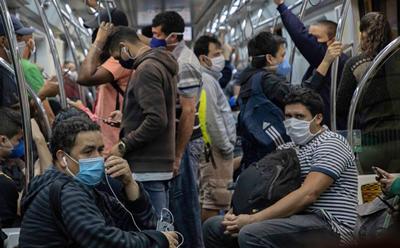
An international team of researchers advocates the use of UV-C light in indoor spaces as a way to reduce the transmission of SARS-CoV-2 viruses.
This solution meets the requirements of fast, scalable, and affordable implementation to fulfill the needs of disinfecting working spaces, such as offices, schools, healthcare facilities, and public transportation, to name a few.
Barcelona, June 18, 2020
The SARS-CoV-2 outbreak is posing an extraordinary challenge that requires swift worldwide action for the massive deployment of affordable and ready-to-apply measures to drastically reduce its transmission probabilities in indoor spaces, and eventually return to conventional activities such as working at the office, going to school, or even attending entertainment events.
Studies show that the virus transmission follows two main paths. Firstly, the virus can transmit through air in droplets exhaled by infected individuals and inhaled by healthy individuals. Secondly, it can be deposited on surfaces from either exhalations or hand contact. Now, several measures are being adopted to help prevent the transmission of this disease. The common ones refer to facial masks and other physical barriers that if properly used have proven to be highly effective but that however depend on compliance of the population.
A long series of studies suggest that virus transmission in indoor spaces has a much higher transmission rate than outdoors. Filters and chemicals have been presented as possible solutions to minimize this problem, but even though these are efficient solutions to reduce the concentration of contaminated particles and droplets through ventilation systems, their installation may be costly and time-consuming. In addition, chemicals such as ozone are very effective for virus disinfection, but if misused they are harmful for humans.
In this context, in a study recently published in ACS Nano, ICREA Prof. at ICFO Javier García de Abajo, in collaboration with ICREA Profs. Andreas Meyerhans (Universitat Pompeu Fabra) and Joan Rosell-Llompart (University Rovira i Virgili), together with Profs. Rufino Javier Hernández (University of the Basque Country), Ido Kaminer (Technion), and Tilman Sanchez-Elsner (University of Southampton), experts in the fields of virology, immunology, aerosols, architecture, and physics, have surveyed the possible methods to prevent SARS-CoV-2 propagation in indoor spaces. Following this survey, they advocate for one measure that they believe to be particularly efficient, easily deployable, and economically affordable: virus inactivation by ultraviolet light.

[Figure 1: Pathways of viral infection in everyday life shown in a simplified scheme (top) and illustrated by pictorial descriptions of exposure to virus in everyday activities (bottom). Placement of UV-C light sources at ventilation systems and rooms not in use, without direct optical paths to humans, help reduce virus propagation. Image sketches by Nacho Gaubert]
The study gives information on the currently available UV-C sources, such as fluorescent lamps, microcavity plasmas, and LEDs, emphasizing that, by irradiating this type of light inside the ventilation systems of buildings and in shared indoor spaces while not in use, it is possible to quickly and efficiently deactivate airborne and surface-deposited SARS-CoV-2 viruses.
They also explore costs and investments in deploying such technology and argue that a global capital investment of a few billion dollars in UV-C sources could protect of the order of ~109 indoor workers worldwide.
Disclaimer: UVC equipment for virus disinfection is being commercialized by a number of companies worldwide. The authors of the study have no interests in or are sponsored by any of such companies.